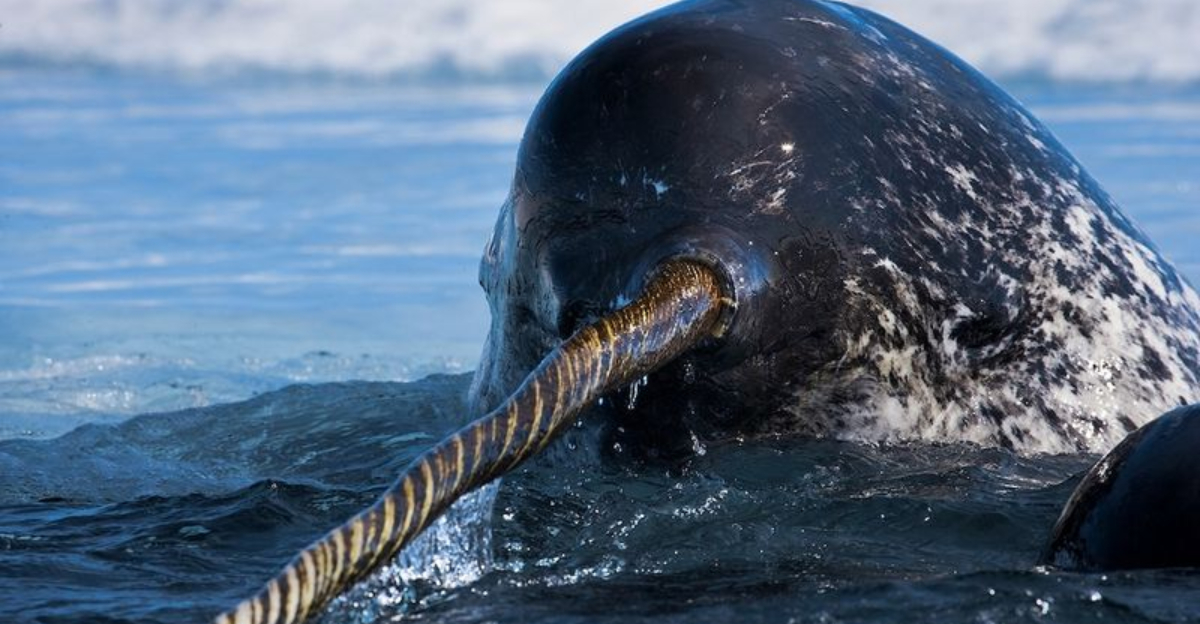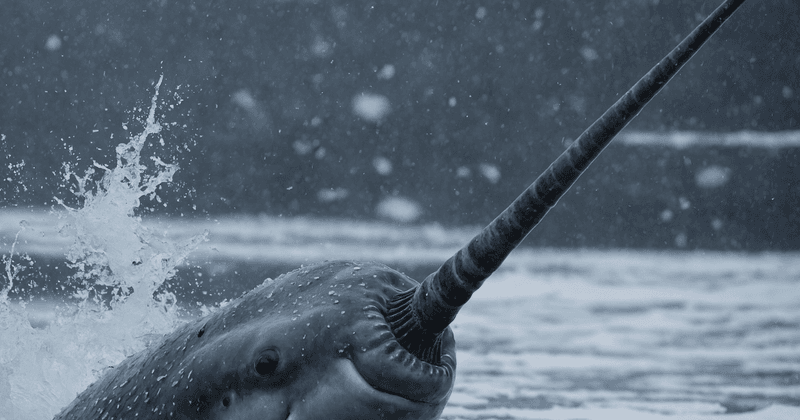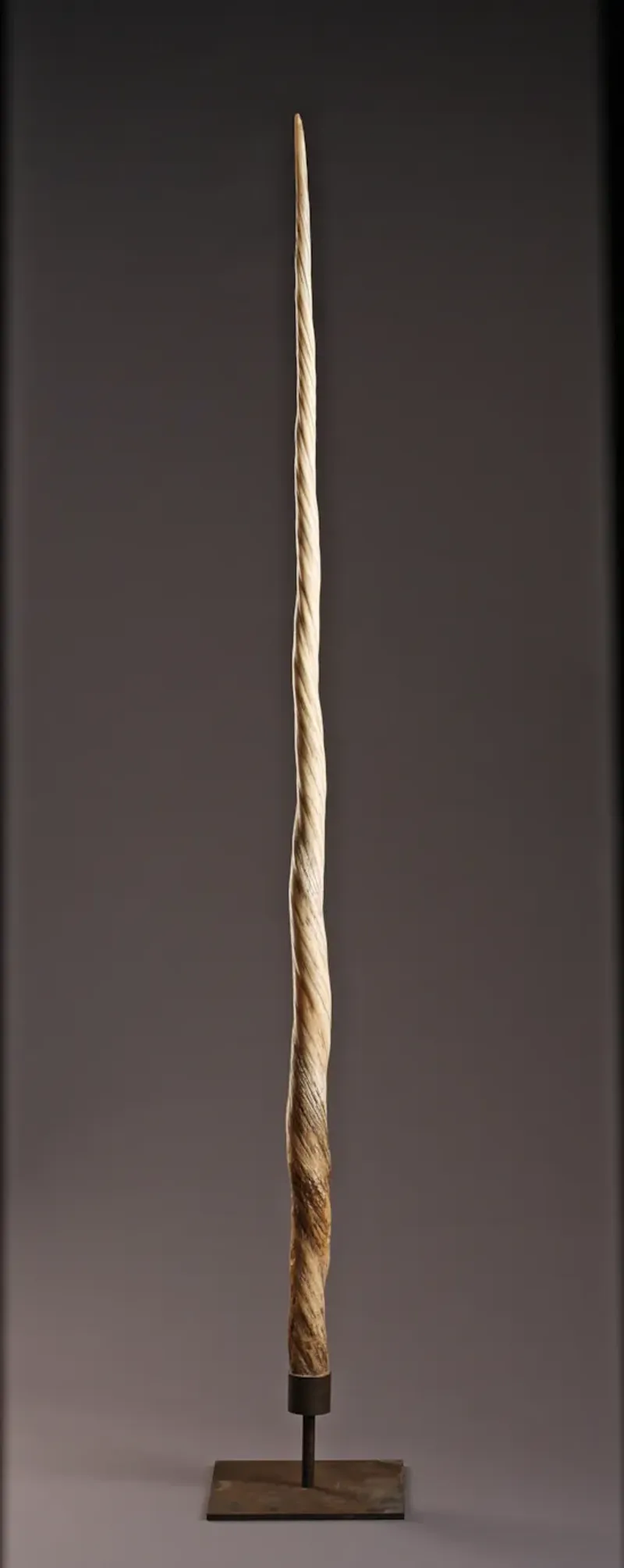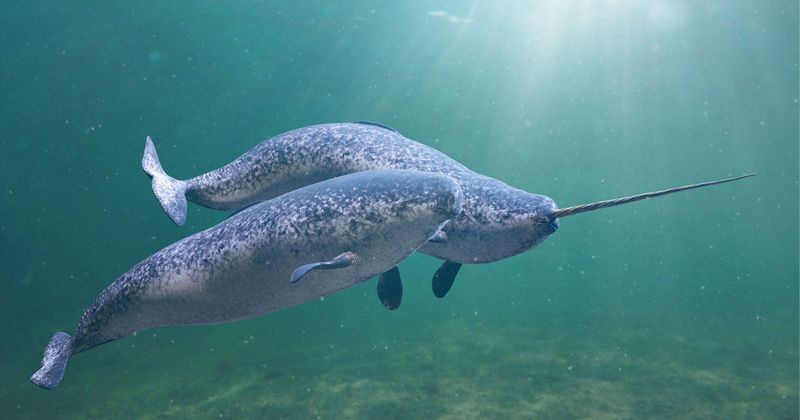15 Mysterious Ways The Narwhal Uses Its Unicorn-Like Horn

Ever hear of a real-life unicorn? Meet the narwhal, a marine marvel with a spiral tusk that’s legendary! This tusk isn’t just for show. It’s a multi-tool of the Arctic seas.
This list uncovers some unexpected and fascinating ways these creatures excel in their icy habitat. Get ready to be amazed by these spiraled wonders!
1. Echolocation Mastery

The narwhal’s tusk, or rather its tooth, acts like nature’s sonic screwdriver. Narwhals navigate the icy depths using echolocation, bouncing sound waves off objects to “see” their surroundings.
Imagine using your front tooth to map out your living room! They can detect subtle changes in the water’s pressure and temperature using this sophisticated method.
The tusk is sensitive to touch and vibrations, enhancing their ability to find breathing holes in the ice.
2. Courtship Display

In the world of narwhals, romance is in the tusk! These sea unicorns use their horns in courtship rituals, swirling together in an elegant underwater ballet.
The males’ long, spiraled tusks are a signal of genetic fitness, attracting potential mates.
It’s like showing off a prized possession at a car show, where the flashiest wins the day. This dramatic display isn’t just for show but a crucial part of narwhal dating.
3. Social Hierarchy Signaling

Among narwhals, size matters. The length and size of the tusk can indicate a narwhal’s status within their pod. It’s their version of a business card, flaunting dominance and seniority.
Larger tusks often belong to those higher up in the social ladder, keeping younger or less dominant members in line.
This natural hierarchy helps maintain order and harmony within their groups.
4. Ice Breaking Tool

Need to break some ice? Narwhals have that covered, literally! Their tusks are sturdy tools for breaking through thin ice to access air. This ability is crucial when trapped beneath frozen surfaces.
The sheer power and strategic use of their horns enable them to survive in the harshest conditions, even when the ice seems unyielding.No need for ice picks when you’ve got a built-in tool!
5. Feeding Assistance

Who knew dinner could be a tusk’s task? Narwhals use their horns to stir up the seabed, disturbing fish and making them easier to catch. It’s akin to stirring soup to bring the noodles to the top!
This technique allows them to access prey hidden within the ocean’s murky depths. By creating movements in the water, they can flush out hiding fish, making hunting more effective.
6. Salinity Detection

What if your tooth could taste the ocean? The narwhal’s tusk can. It’s believed to detect salinity levels, helping them find suitable areas for living and hunting. This ability is crucial for navigating the changing conditions of the Arctic waters.
By sensing salinity, narwhals can also detect where freshwater from melting ice enters the sea, a vital skill for locating prey-rich environments. Talk about having your finger on the pulse of the ocean’s briny rhythm!
7. Temperature Gauge

Narwhals come with a built-in thermometer, courtesy of their horn. This tusk can sense temperature changes in the water, a crucial skill for navigating the chilly Arctic seas.
Such sensitivity allows them to locate the most habitable areas or track where prey might be more abundant. Being able to detect temperature variations helps them adapt quickly to their icy environment.
8. Predator Defense

Who needs a sword when you’ve got a tusk? Narwhals have been observed using their horns defensively, deterring potential predators.
The long, sharp tusk can be an intimidating sight, warding off threats with its sheer presence.
In the wild world of the Arctic, standing your ground is essential. The tusk provides a means of protection, allowing narwhals to assert themselves when threatened.
9. Communication Aid

Believe it or not, narwhal horns are also chat tools! They help in communication, amplifying the sounds narwhals use to talk to each other. Imagine using your tooth as a walkie-talkie!
The tusk enhances their vocalizations, allowing them to stay connected within their pods. This ability is crucial in the vast, open expanse of the ocean, where staying in touch with family is vital for survival.
10. Breathing Hole Locator

Need to find a breath of fresh air? Narwhals have a knack for locating breathing holes in the ice, essential for survival in their frozen world.
This skill is life-saving, especially in areas where air is scarce and the ice is thick. The tusk acts like a compass, pointing them to safety and fresh air.
11. Antiviral Properties

The narwhal’s tusk isn’t just for show; it might have health benefits too! Researchers have found that it contains compounds with antiviral properties, potentially protecting these animals from infections.
This natural defense is like having a built-in health shield, an incredible adaptation in their challenging environment.
While more research is needed, the tusk’s unique composition suggests it plays a role in their overall health strategy. Who knew a tooth could be such a powerful protector?
12. Migratory Guidance

Navigating the vast Arctic ocean is no small feat, but narwhals manage it with style.
Their tusks might serve as navigational aids, helping them maintain course during long migrations. It’s akin to having a map etched into your tooth!
The tusk’s ability to sense changes in the environment aids in guiding them through treacherous waters.
13. Aesthetic Beauty

Beyond function, the narwhal’s horn is a thing of beauty. Its spiraled form has inspired art and myth, captivating human imagination for centuries.
This aesthetic appeal isn’t just for us; it plays a role in the narwhal’s social interactions and mating rituals.
The elegance of their tusks speaks of grace and strength, qualities revered both underwater and in our own cultural stories.
14. Antique Collectible

Did you know that narwhal tusks were once considered unicorn horns?
These tusks were prized collectibles in medieval Europe, believed to possess magical properties. They were often displayed in cabinets of curiosities alongside other rare and mystical items.
This historical intrigue adds a layer of fascination to the narwhal’s story, melding myth with reality.
Today, these tusks are recognized for their natural wonder rather than mystical powers, yet they still hold a place in the annals of history.
15. Research And Education

In the realm of science, the narwhal’s tusk is an enigma waiting to be solved.
Researchers study these horns to understand more about narwhal biology and Arctic ecosystems. It’s like having a key to unlock the secrets of the icy depths.
These horns serve as natural archives, preserving clues about the Arctic’s past and present. It’s an ever-unfolding story told through spirals.






